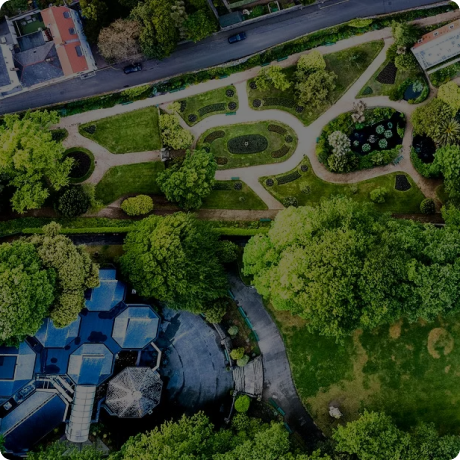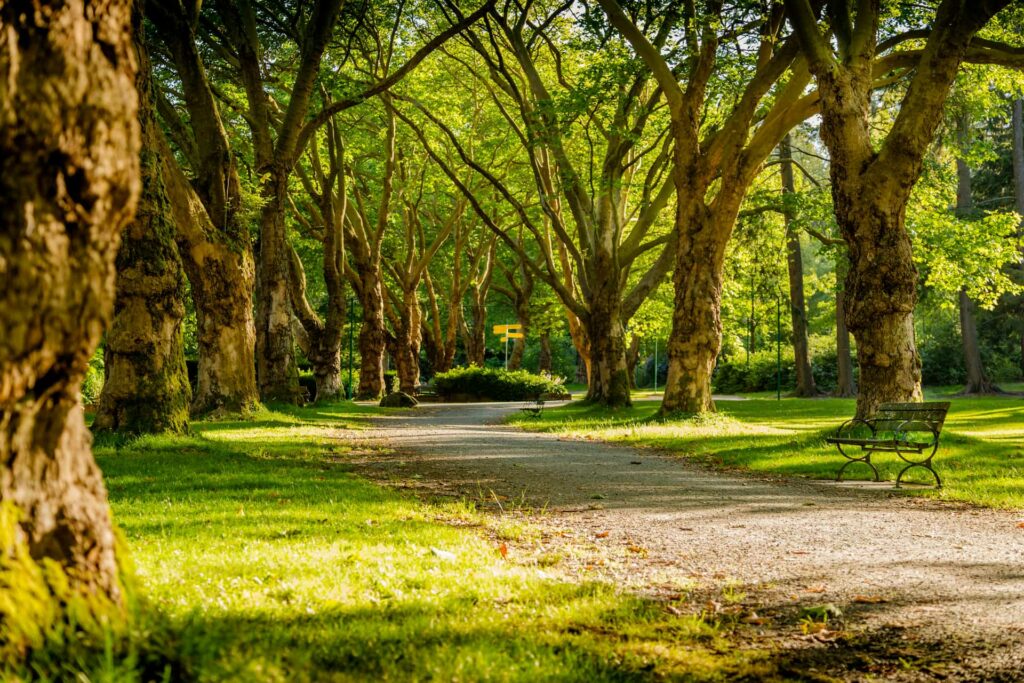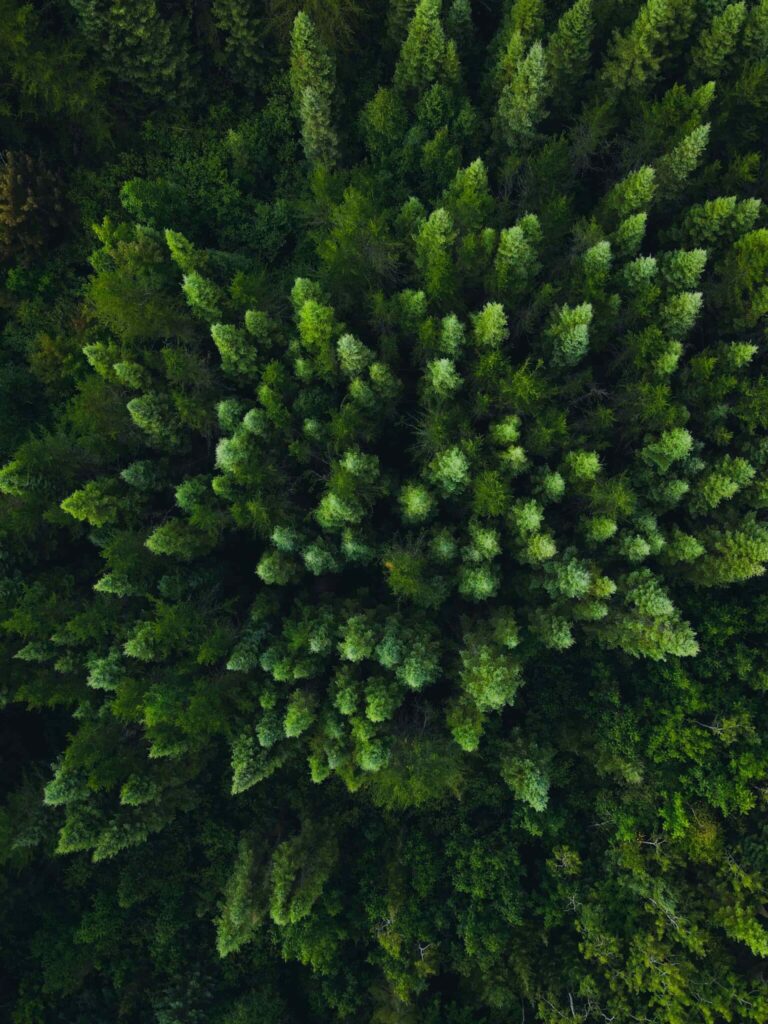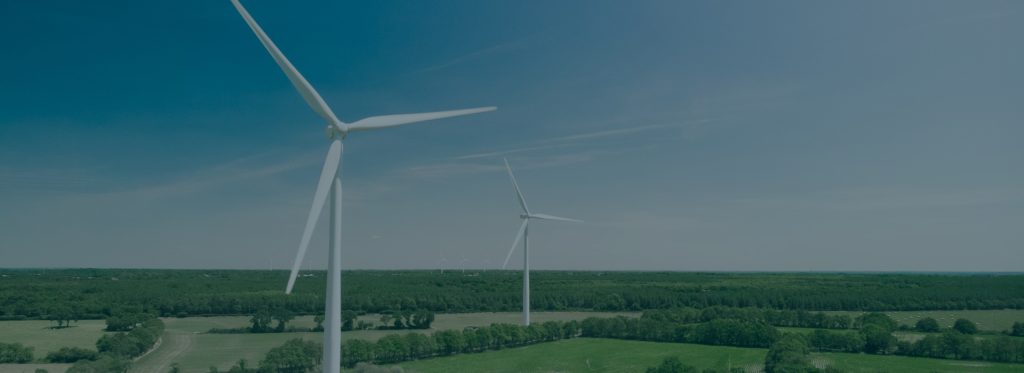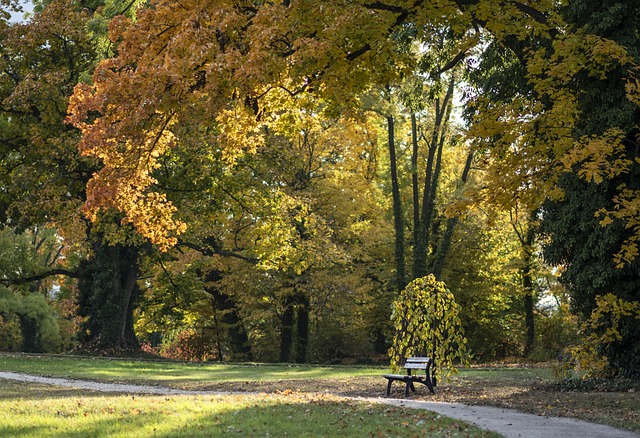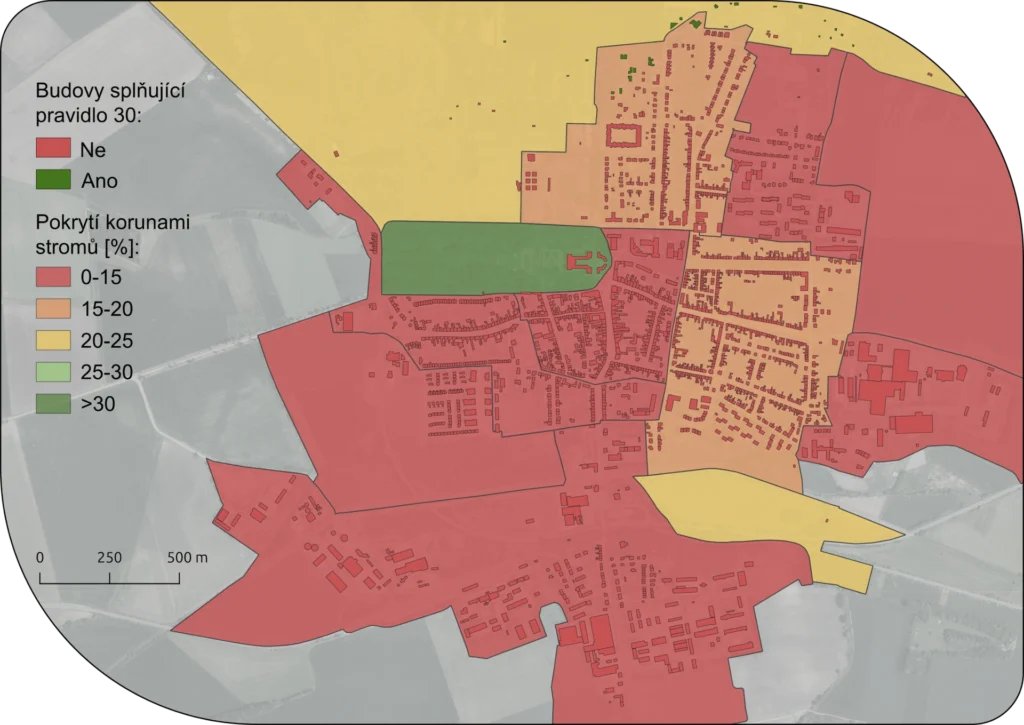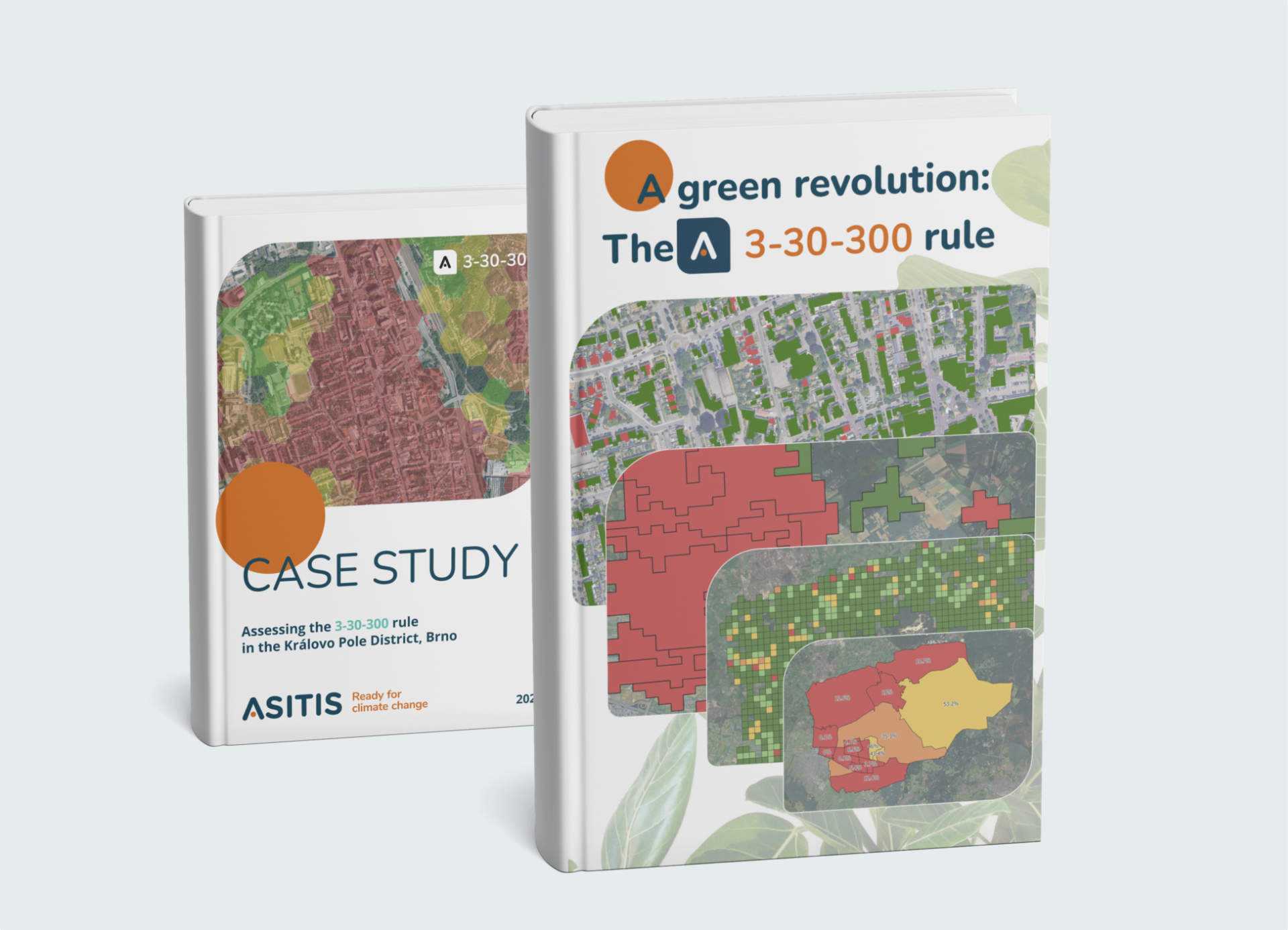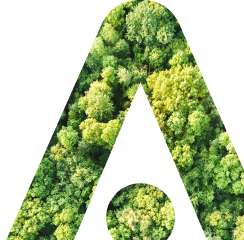Climate change is a reality, but we have solutions to help cities improve their microclimate and quality of life for residents. And what’s best? We have concrete data from a successfully implemented project.
The 3-30-300 Rule: A simple concept with major impact
This concept measures urban greenery quality using three easy-to-understand criteria:
- 3 trees – A view of at least three trees from your window improves mental wellbeing, reduces stress, and increases work performance. Visual contact with nature has a measurable effect on our health and satisfaction.
- 30% canopy cover – Every urban district needs at least 30% tree canopy coverage. This parameter effectively reduces the heat island effect, improves air quality, and creates a more pleasant microclimate.
- 300 meters to green space – Everyone should have access to quality green space within 300 meters of their home. Proximity to parks and green areas demonstrably reduces the risk of cardiovascular disease and promotes an active lifestyle.
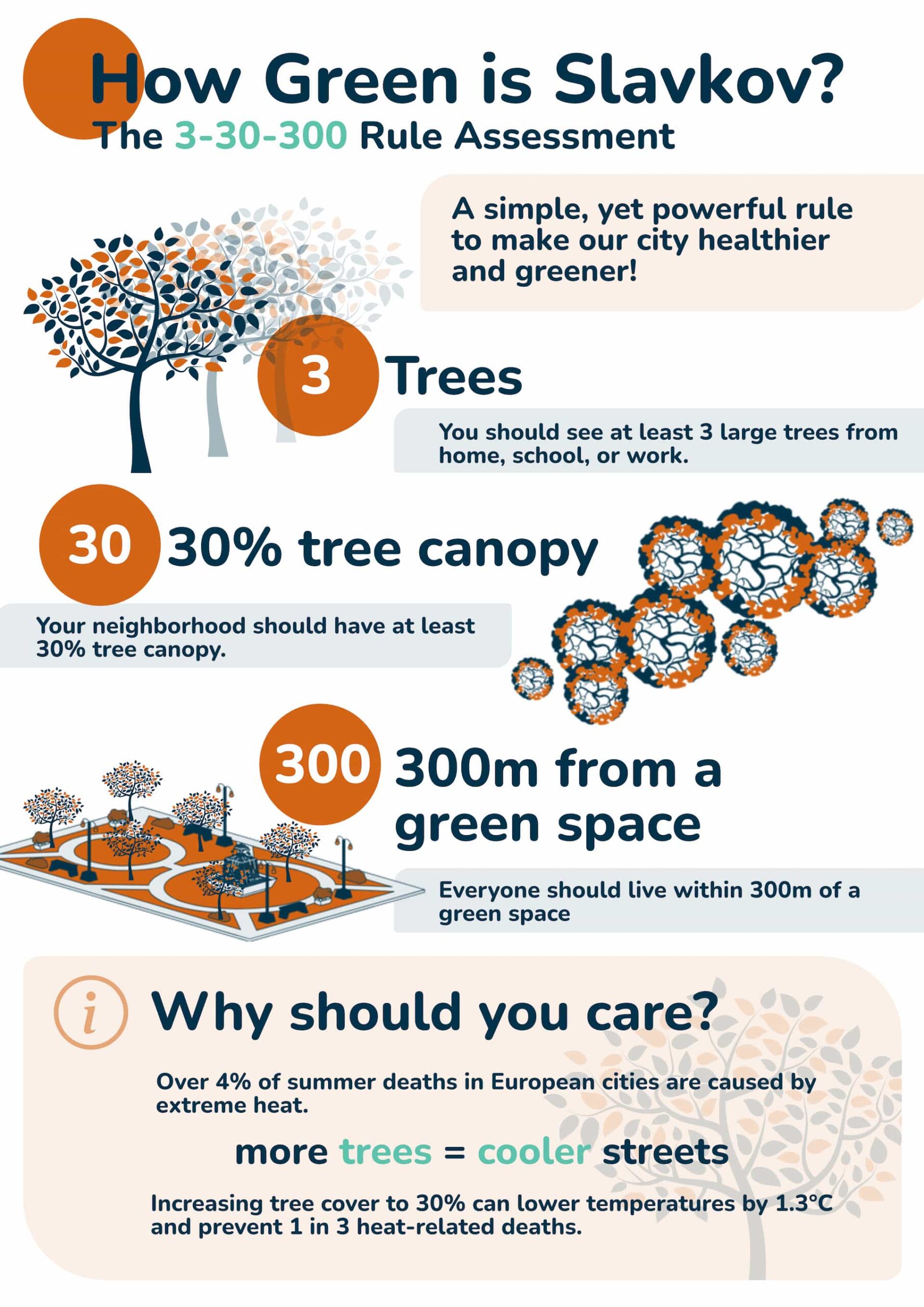
Slavkov results:
We recently completed an analysis for Slavkov u Brna, which brought interesting findings:
Rule 3: 81% of buildings (1,628 out of 2,019) have a view of at least three trees. Rule 3 is generally well fulfilled throughout the city, with the exception of two areas (Zelnické and Bučovické).
Rule 30: Only 2.5% of buildings (51) are located in areas with sufficient canopy coverage. Meeting Rule 30 is generally very difficult to achieve. However, when we look at compliance with alternative rules of 15, 20, and 25% tree canopy coverage, particularly in the city center, most of the territory is covered by at least 15 or 20%. In the peripheral parts of the city, however, coverage remains very low, not even reaching 15%.
Rule 300: 35% of buildings (705) have access to quality green space within 300 meters. In some neighborhoods, such as Zelnice, this indicator is significantly higher. Rule 300 is largely fulfilled in the city center, but in peripheral areas, public green space is not easily accessible, primarily due to the large amount of agricultural land surrounding the city without the presence of a mosaic of forest areas.
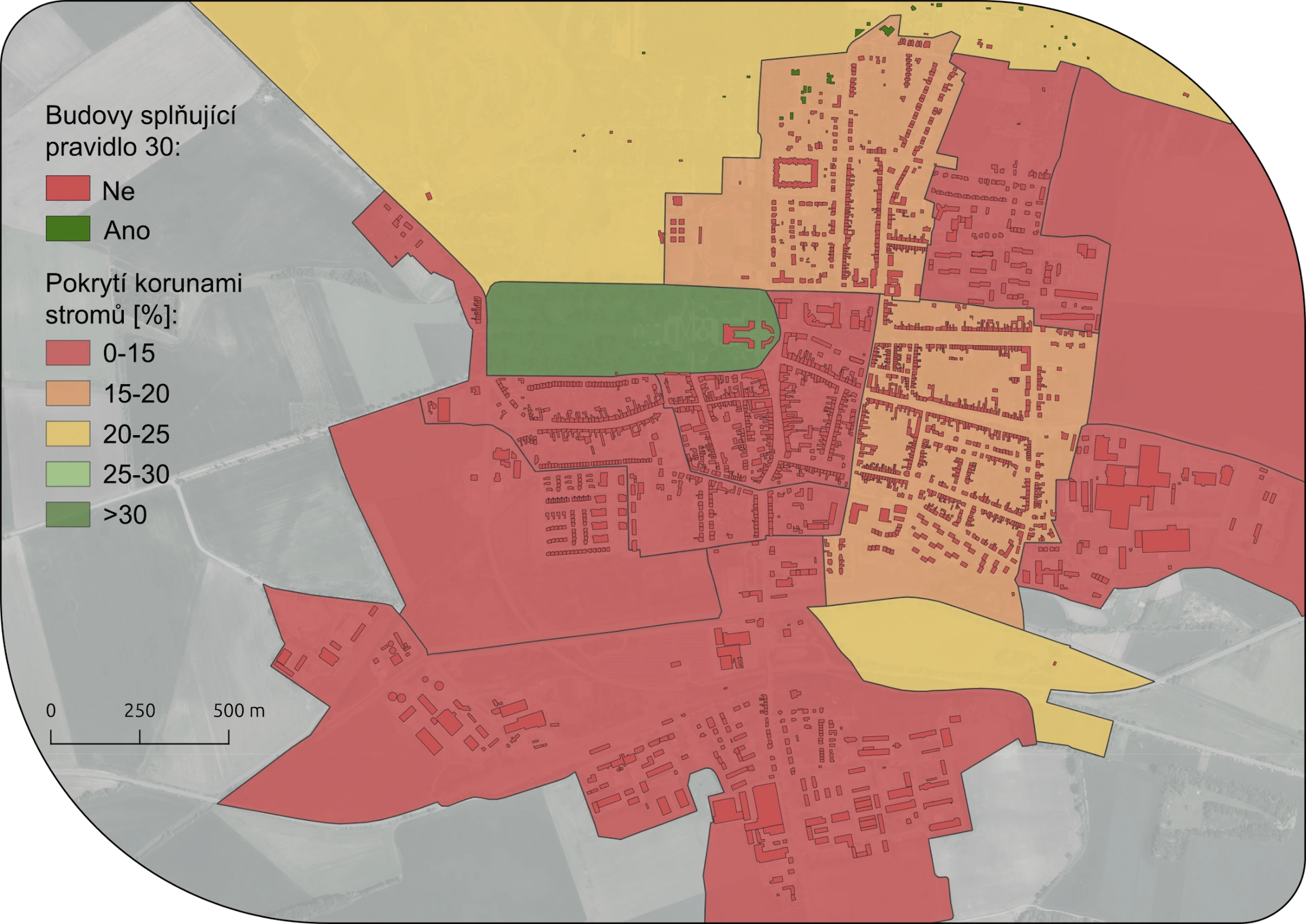
Why do you need a 3-30-300 analysis?
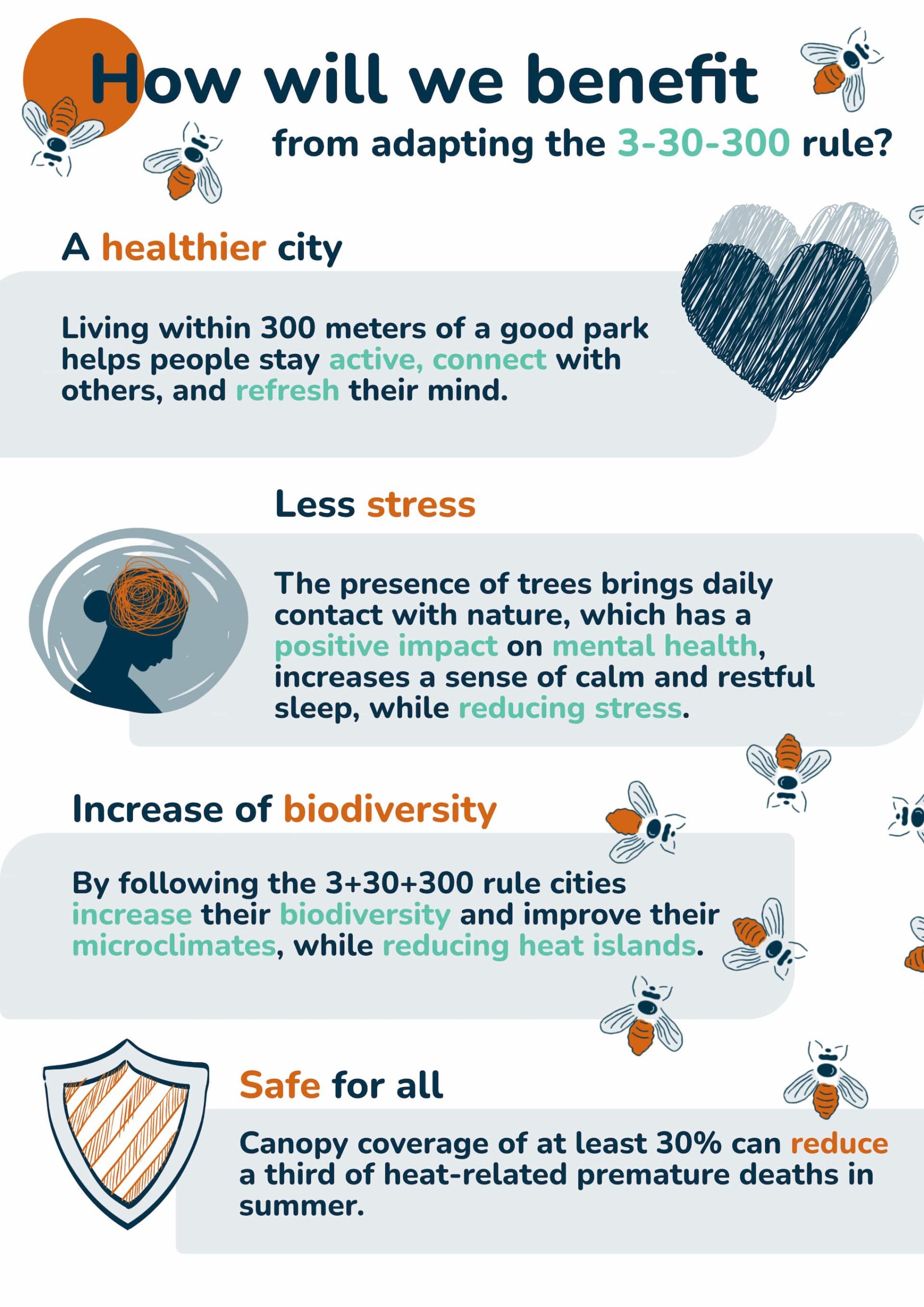
By ordering an analysis, you’ll gain:
- Stronger arguments for new plantings – Base your discussions with authorities, developers, and citizens on concrete data
- Targeted planting recommendations – Discover where to place trees for maximum effect
- Proven examples from practice – Utilize solutions that already work elsewhere
Recommendations for better urban microclimate
How can Slavkov – and any other city – improve its score?
- Strategic planting – Linden trees and maples with spreading canopies create natural cooling islands
- Vertical greenery and green roofs – Ideal solutions for densely built areas with limited space
- Utilization of unused spaces – Parking lots, roundabouts, and forgotten areas have the potential to become pocket parks
- Community projects – Engage local residents in planting and caring for greenery
Find more inspiration:
Prepare for climate change with us
Are you interested in a similar analysis for your city? We’re ready to help you create a strategy that will improve the quality of life for your residents and contribute to the long-term sustainability of your urban environment.
Climate change is a challenge, but with smart planning and strategic investments in green infrastructure, we’re ready for it. Are you?
